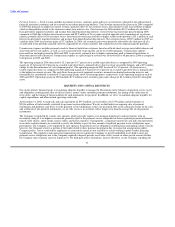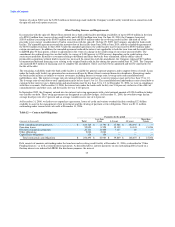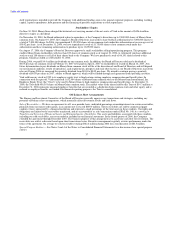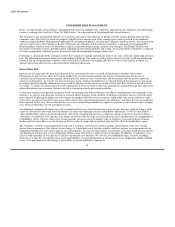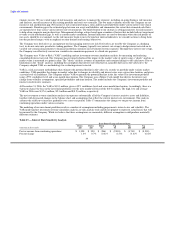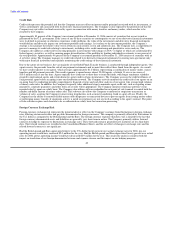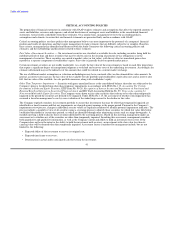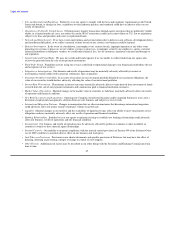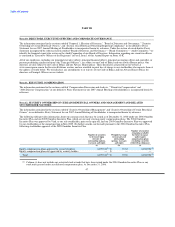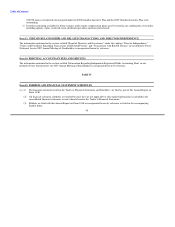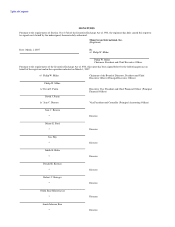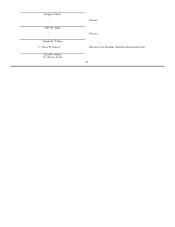MoneyGram 2006 Annual Report Download - page 44
Download and view the complete annual report
Please find page 44 of the 2006 MoneyGram annual report below. You can navigate through the pages in the report by either clicking on the pages listed below, or by using the keyword search tool below to find specific information within the annual report.
Table of Contents
CRITICAL ACCOUNTING POLICIES
The preparation of financial statements in conformity with GAAP requires estimates and assumptions that affect the reported amounts of
assets and liabilities, revenues and expenses, and related disclosures of contingent assets and liabilities in the consolidated financial
statements. Actual results could differ from those estimates. On a regular basis, management reviews the accounting policies,
assumptions and estimates to ensure that our financial statements are presented fairly and in accordance with GAAP.
Critical accounting policies are those policies that management believes are most important to the portrayal of a company's financial
position and results of operations, and that require management to make estimates that are difficult, subjective or complex. Based on
these criteria, management has identified and discussed with the Audit Committee the following critical accounting policies and
estimates, and the methodology and disclosures related to those estimates:
Fair Value of Investment Securities — Our investment securities are classified as available-for-sale, including securities being held for
indefinite periods of time and those securities that may be sold to assist in the clearing of payment service obligations or in the
management of securities. These securities are carried at market value (or fair value), with the net after-tax unrealized gain or loss
reported as a separate component of stockholders' equity. Fair value is generally based on quoted market prices.
Certain investment securities are not readily marketable. As a result, the fair value of these investments is based on cash flow projections
that require a significant degree of management judgment as to default and recovery rates of the underlying investments. Accordingly, the
estimates determined may not be indicative of the amounts that could be realized in a current market exchange.
The use of different market assumptions or valuation methodologies may have a material effect on the estimated fair value amounts. In
general, as interest rates increase, the fair value of the available-for-sale portfolio and stockholders' equity decreases and as interest rates
fall, the fair value of the available- for-sale portfolio increases, along with stockholders' equity.
Other Than Temporary Impairment — Securities with gross unrealized losses at the consolidated balance sheet date are subjected to the
Company's process for identifying other-than-temporary impairments in accordance with SFAS No. 115, Accounting For Certain
Investments in Debt and Equity Securities, EITF Issue No. 99-20, Recognition of Interest Income and Impairment on Purchased and
Retained Beneficial Interests in Securitized Financial Assets and SEC Staff Accounting Bulletin No. 59, Views on Accounting for
Noncurrent Marketable Equity Securities. The Company writes down to fair value securities that it deems to be other-than-temporarily
impaired in the period the securities are deemed to be impaired. Under SFAS No. 115, the assessment of whether such impairment has
occurred is based on management's case-by-case evaluation of the underlying reasons for the decline in fair value.
The Company regularly monitors its investment portfolio to ensure that investments that may be other-than-temporarily impaired are
identified in a timely manner and that any impairments are charged against earnings in the proper period. Pursuant to the Company's
impairment review process, changes in individual security values are regularly monitored to identify potential impairment indicators. The
process includes a monthly review of all securities using a screening process to identify those securities for which fair value falls below
established thresholds for certain time periods, or which are identified through other monitoring criteria such as ratings downgrades. A
monthly meeting is held to discuss those securities identified by the screening process. Based on this meeting, management makes an
assessment as to whether any of the securities are other-than-temporarily impaired. In making this assessment, management considers
both quantitative and qualitative information, as well as the Company's intent and ability to hold an investment to recovery. If the
Company does not have the intent or the ability to hold the investment until recovery, an investment with a fair value less than its
carrying value will be deemed other than temporarily impaired. Assessment factors considered by management include, but are not
limited to, the following:
• Expected ability of the investment to recover its original cost;
• Expected time frame to recovery;
• Deterioration in actual and/or anticipated cash flows from the investment;
41



